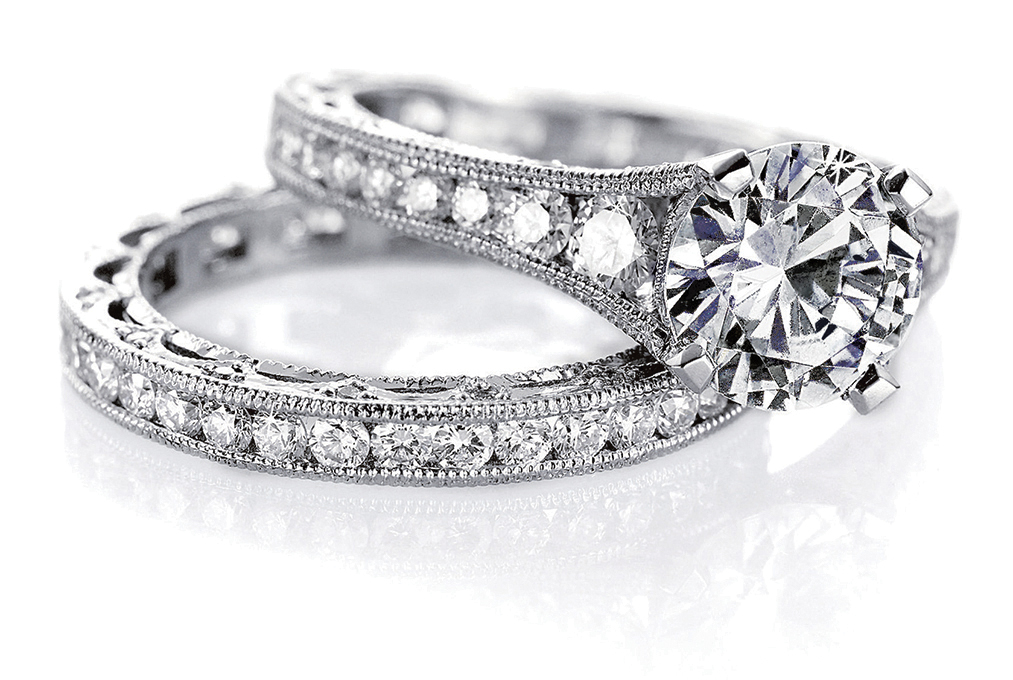Contributed by Barak Henis, Vice President of Diamonds Direct Crabtree
When considering diamonds, most Americans think of icons like the blue Tiffany Box and the unforgettable “A Diamond is Forever” slogan. Though memorable, these icons don’t reveal the remarkable story behind the incredible journey a diamond takes before finding its way to your finger.
Worldwide, an estimated 130 million carats of diamonds are mined annually around the world. Only about one-quarter of the diamonds mined each year are jewelry quality. The rest are used in a variety of manufacturing and industrial purposes.
Diamond trade is closely monitored by the Kimberly Process, which identifies the origin of each diamond and requires the industry to ship rough and polished diamonds in officially sealed packages. This regulation implements ethical mining and selling practices and helps to assure consumers their diamond purchase is not funding war and/or human rights violations.
Modern technology and traditional methods are used to analyze the natural components of each diamond, which will affect the color, clarity, cut and carat weight of the finished product. A polished diamond can weigh as little as 50 percent of the weight of the rough diamond.
Polished diamonds are sent to independent diamond laboratories, such as the European Gemological Laboratory or the Gemological Institute of America, to certify the quality of each loose stone. Once certified, reports are issued to identify specific characteristics of each diamond, including weight, measurements, proportions, finish, color and clarity. These key characteristics are used not only to determine fair market value, but also to identify the diamond.
When grading diamonds, many factors come into play, but the most important are the Four C’s: color, clarity, carat and cut. The finest white diamond carries a D color grade, and the scale continues through Z. When comparing different color grades within a close range, most people will be unable to see a difference in color, although there can be a significant difference in price. The phrase “good color” actually means the diamond shows no color.
It might be surprising to learn diamonds are also available in a variety of colors including red, purple, pink, green, orange, yellow, blue, brown and black. These extremely rare and unique diamonds are termed “fancy colors” and are graded based on the hue, tone and saturation of their color. The rarest of the fancy colors is red.
The color scale of various color grades of diamonds:

The clarity grade is the degree to which the diamond is free of inclusions and blemishes. Internal birthmarks known as inclusions and external characteristics called blemishes are found on most diamonds. The clarity grade is given based on the number, nature, size, location and color of each inclusion or blemish. Clarity characteristics are also used to distinguish one diamond from another. A diamond’s inclusions are like fingerprints, making each diamond one of a kind. Diamonds that are flawless are extremely rare and command the highest prices. Most diamonds have minute inclusions that cannot be seen by the naked eye. These minute inclusions reduce the cost of the diamond without detracting from its beauty or durability.
How to differentiate between the different clarity grades of diamonds: The carat weight is determined by a scale of metric carats, which is equal to approximately 1/5 of a gram, or 1/142 of an ounce. One carat is equal to 100 points, so if a diamond weighs 1.63 carats, it is 1 carat and 63 points. The larger a diamond is, the rarer it is.
The carat weight is determined by a scale of metric carats, which is equal to approximately 1/5 of a gram, or 1/142 of an ounce. One carat is equal to 100 points, so if a diamond weighs 1.63 carats, it is 1 carat and 63 points. The larger a diamond is, the rarer it is.
The carat weight scale below shows roughly how to differentiate between different carat weights of diamonds:
Most people think that the final C, cut, refers to the diamond’s shape. The cut actually refers to a diamond’s proportions, such as its depth, diameter and the uniformity of its facets. These are all the characteristics that control brilliance, durability and other features we look for in a diamond. Good cut is essential to a diamond’s beauty. Even a diamond with outstanding color and clarity will not display the sparkle and beauty that diamonds are famous for if its proportions don’t interact with light as they should.
An ideal cut versus a too shallow or too deep cut:

The Four C’s play a major factor in grading diamonds. The next time you see a beautiful sparkling diamond, remember how each stone is unique, and that its history entails much more than being placed in a shiny wooden box.
For more information on selecting a diamond, contact Diamonds Direct Crabtree at (919)571-2881 or www.diamonds-direct.com.






